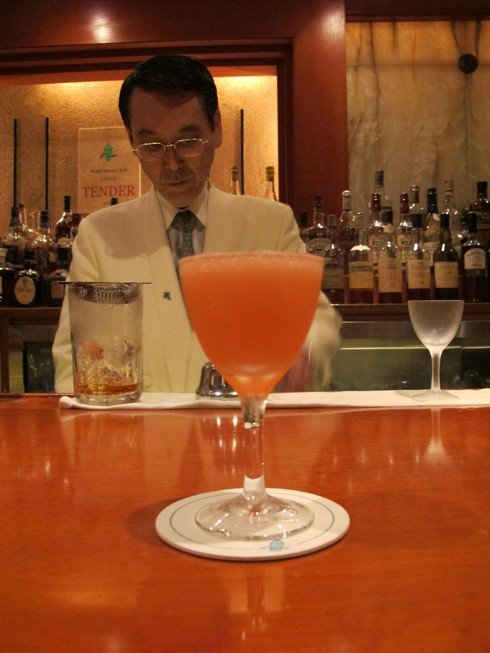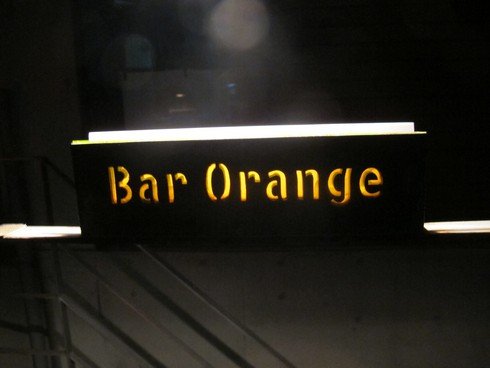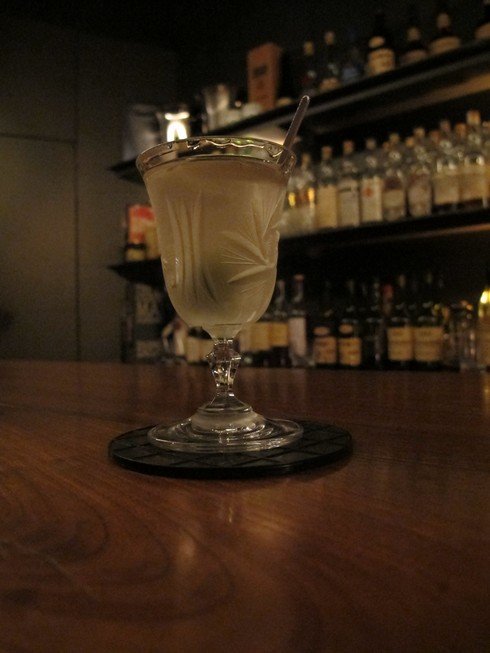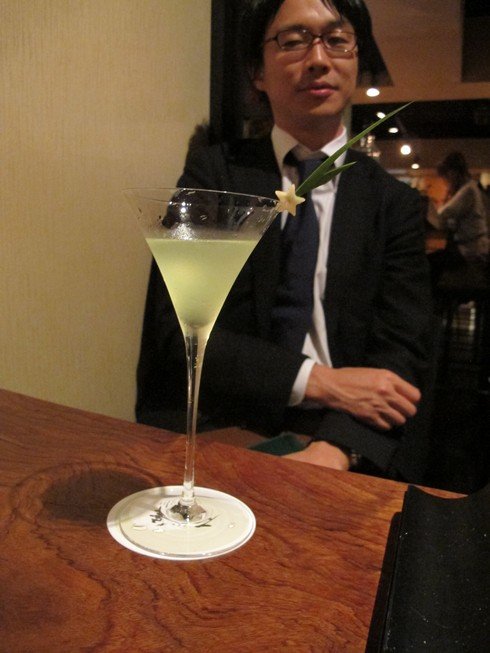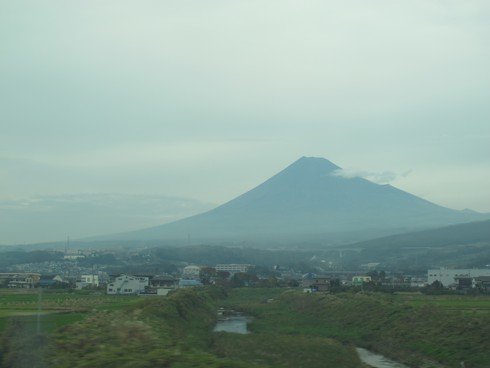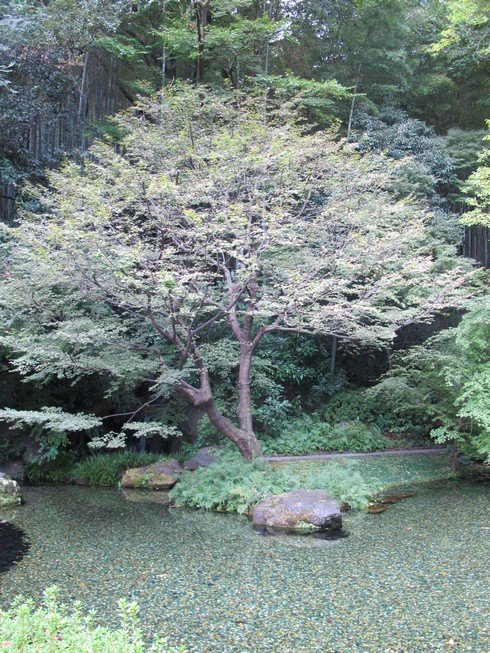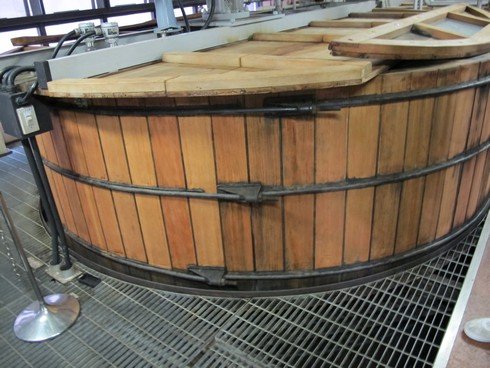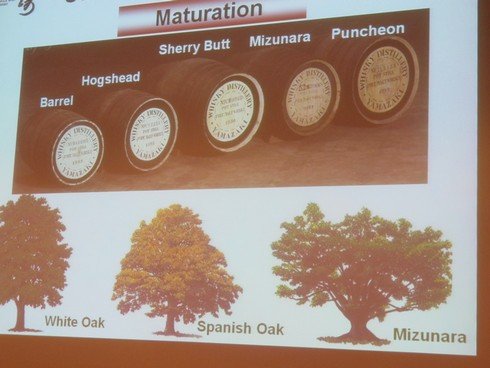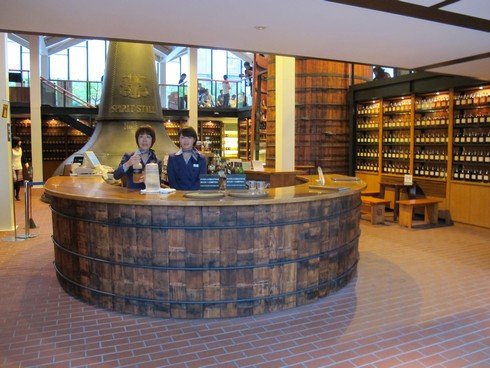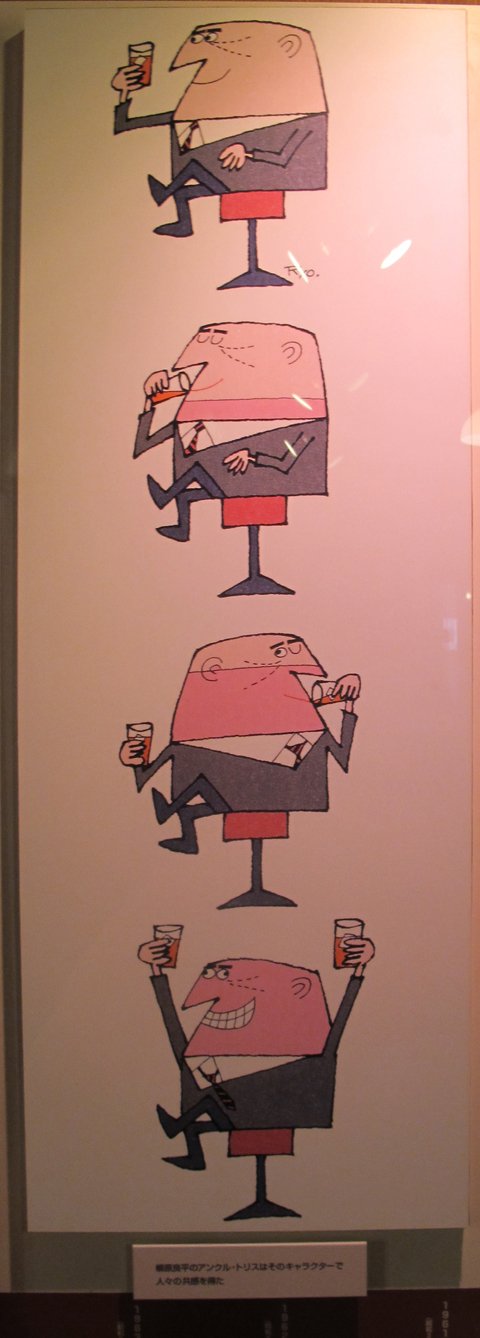On my five-day visit to Japan with Suntory whiskies I hit 21 bars by my count. I am talking about them in groups. Next up: Cocktail Bars.
The difference between the various styles of bars is subtle and I'm defining them as I see them. I'll be describing whisky bars, cocktail bars, highball and standing bars, and pubs/clubs/dives. Many cocktail bars look pretty much like whisky bars, since so many bars carry a massive amount of scotch.
Bar High Five is run by Japan's most famous bartender, Hidetsugu Ueno (Ueno-san). It was voted one of the world's 50 best bars. It's a tiny little place located in a building full of bars.
It only seats about a dozen people at the bar, plus there is an additional booth that can hold about eight more people. The mood inside was great – people complain about the formality of Japanese bartenders but I've found that when you're sitting at the bar it's fine to chat and laugh and have a good time with them.
Unfortunately we were only here for one drink as we were a large group at that point and didn't feel like we should hog the whole place. Someday I will be back for longer!

(At least Ueno-san looks good in this picture.)
Tender Bar is owned by Japan's other most famous bartender, Kazuo Uyeda (Uyeda-san). This bar is classy and weighty and feels expensive; the Pegu Club to High Five's PDT.
Though I was tempted to order Uyeda's famous Gimlet, I opted for a Jack Rose that came out dry, as opposed to my bar-mate's surprisingly delicious bitters-free Manhattan.
Uyeda-san's wife was our host for the evening and her English was quite good. I had met them both in New York for a 2-day seminar on Japanese bartending.
Bar Orange, near Shibuya in Tokyo, is a nearly-hidden downstairs cocktail bar. It's dedicated to the movie Clockwork Orange though you'd not call it a theme bar. It's very sleek and dark and I'd imagine attracts a stylish young crowd. The cocktails are served in gorgeous vintage-looking glasses.
Ishi no hana was the most progressive bar we visited in Japan. It's run by bartender Shinobu Ishigaki, who won the Bacardi Grand Prix competition a few years ago with this drink:
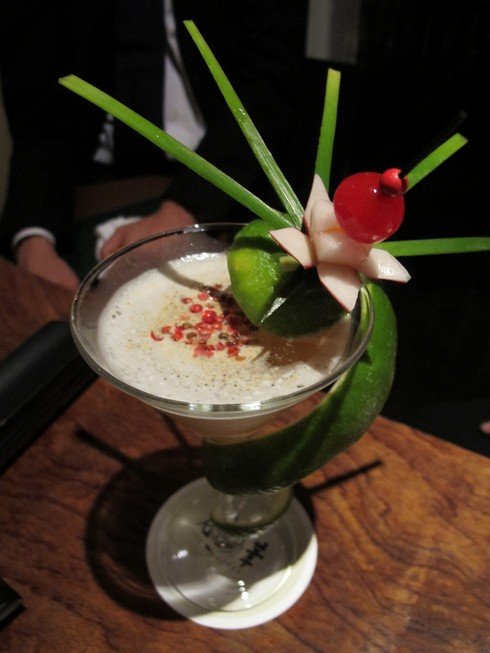
(That is some serious garnish.)
I had an Apple Vinegar Martini, while my bar companion had a Yellow Chartreuse Mojito. Other ingredients on the menu include rhubarb confit, jasmine, saffron syrup, and earl grey tea.
The bartender Shinobu Ishigaki even has his face on a can of a green tea beverage called calpis sour.
While the Ginza bars of Tender Bar, High Five, and Star Bar get all the glory, visitors to Tokyo should definitely put this one on their list.


